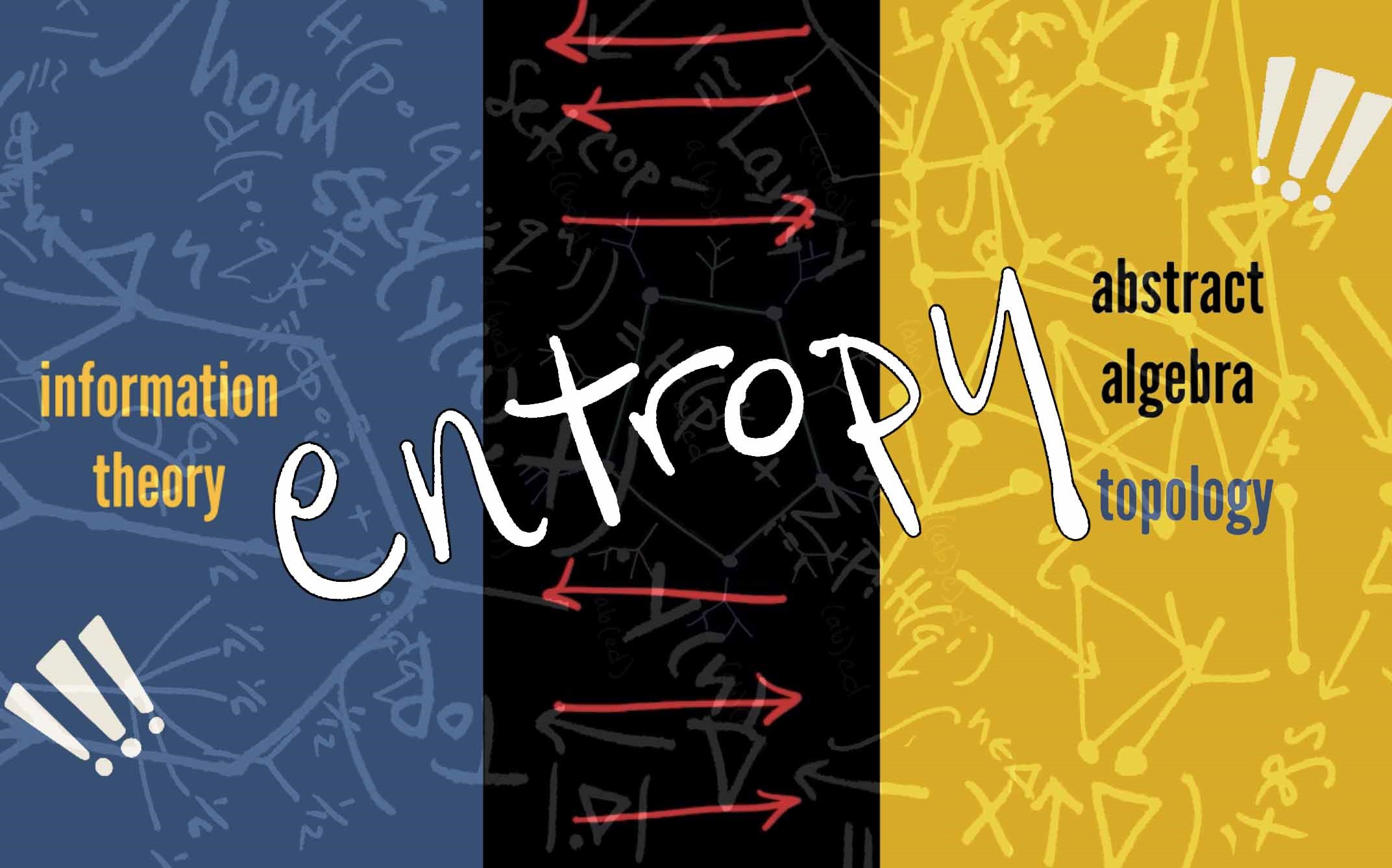Home>Science>The Surprising Truth About Entropy: What You Need To Know


Science
The Surprising Truth About Entropy: What You Need To Know
Published: January 10, 2024
Discover the surprising truth about entropy and what it means for science. Learn everything you need to know about this fundamental concept.
(Many of the links in this article redirect to a specific reviewed product. Your purchase of these products through affiliate links helps to generate commission for Noodls.com, at no extra cost. Learn more)
Table of Contents
Introduction
Have you ever wondered about the mysterious force that governs the universe, influencing everything from the behavior of atoms to the fate of galaxies? This force is known as entropy, and its impact is far-reaching, shaping the world around us in ways that may surprise you. In this article, we will embark on a fascinating journey to unravel the enigmatic nature of entropy, exploring its role in the fundamental laws of physics and its unexpected connections to everyday life.
As we delve into the concept of entropy, we will uncover its profound implications for understanding the behavior of energy and matter. From the intricate dance of particles at the subatomic level to the grand movements of celestial bodies, entropy weaves its intricate web, shaping the very fabric of existence.
Join us as we demystify this captivating phenomenon and unveil the surprising truth about entropy. Get ready to expand your understanding of the universe and gain insight into the fundamental principles that govern the world we inhabit.
What is Entropy?
Entropy, a concept deeply rooted in the realms of physics and information theory, is a measure of the disorder or randomness within a system. At its core, entropy encapsulates the tendency of systems to evolve towards a state of maximum disorder. This fundamental concept holds sway over a diverse array of domains, from the behavior of atoms and molecules to the expansive reaches of the cosmos.
In the context of thermodynamics, entropy is intricately linked to the dispersion of energy within a closed system. As energy disperses, it tends to spread out, leading to an increase in entropy. This phenomenon aligns with the Second Law of Thermodynamics, which states that in any isolated system, the total entropy can never decrease over time. This principle underscores the inexorable march towards disorder and randomness within the universe.
In the realm of information theory, entropy takes on a different guise, serving as a measure of uncertainty or surprise within a given set of data. When applied to data compression and communication systems, entropy provides a means of quantifying the amount of information contained within a message. This duality of entropy underscores its versatility, bridging the domains of physics and information theory with profound implications for understanding the nature of order and chaos.
At the heart of entropy lies the concept of probability and multiplicity. In a system with high entropy, there are numerous possible configurations or arrangements, leading to a state of increased disorder. Conversely, a system with low entropy exhibits a more ordered and predictable structure, characterized by fewer possible configurations. This interplay between order and disorder forms the cornerstone of entropy, permeating diverse disciplines and offering profound insights into the underlying fabric of reality.
In essence, entropy serves as a compelling lens through which to view the intricate dance of particles at the microscopic scale and the grand symphony of celestial bodies at the cosmic scale. Its pervasive influence underscores the interconnectedness of physical phenomena and the underlying unity of the natural world, inviting us to explore the profound implications of disorder and randomness in shaping the tapestry of existence.
The Second Law of Thermodynamics
The Second Law of Thermodynamics stands as a pillar of understanding in the realm of physical processes, delineating the inexorable march towards increasing entropy within isolated systems. At its core, this law encapsulates the fundamental principle that the total entropy of a closed system can never decrease over time. This principle underpins the pervasive trend towards disorder and randomness, casting a profound influence over the behavior of energy and matter.
In essence, the Second Law of Thermodynamics heralds the universal propensity for systems to evolve towards a state of maximum entropy. This evolution manifests as the dispersal and dissipation of energy, leading to a gradual increase in disorder within the system. From the diffusion of heat to the expansion of gases, the Second Law governs a myriad of processes, guiding the flow of energy towards states of higher entropy.
Moreover, the Second Law of Thermodynamics engenders a profound understanding of the irreversibility of natural processes. It delineates the unidirectional nature of entropy, highlighting the fact that spontaneous processes invariably lead to an increase in total entropy. This insight underscores the asymmetry of time, shaping our perception of the arrow of time as it unfurls in a relentless march towards increasing disorder.
Furthermore, the Second Law offers invaluable insights into the efficiency of energy transformations and the limitations inherent in harnessing energy for useful work. It underscores the inherent dissipation of energy as it flows through systems, imparting a deeper comprehension of the challenges and constraints associated with energy conversion processes.
In the grand tapestry of the universe, the Second Law of Thermodynamics emerges as a guiding principle, illuminating the pervasive trend towards disorder and the unyielding march towards equilibrium. Its profound implications permeate diverse domains, from the behavior of microscopic particles to the grand movements of celestial bodies, offering a compelling framework for understanding the fundamental nature of physical processes.
In essence, the Second Law of Thermodynamics stands as a cornerstone of understanding, shedding light on the intrinsic tendency of systems to evolve towards states of higher entropy. Its far-reaching influence reverberates through the fabric of the cosmos, underscoring the profound interplay between order and disorder, and offering a gateway to unraveling the enigmatic dance of energy and matter within the universe.
Entropy and Information Theory
Entropy, in the realm of information theory, assumes a captivating guise, transcending its traditional association with disorder and randomness to emerge as a fundamental concept in the quantification of information. At its essence, entropy in information theory serves as a measure of uncertainty or surprise within a given set of data, offering profound insights into the nature of information and its inherent unpredictability.
In the context of information theory, entropy encapsulates the inherent unpredictability of data, reflecting the degree of randomness or disorder within a system of symbols or messages. This concept finds application in diverse domains, from data compression and cryptography to the design of communication systems, where it serves as a cornerstone for understanding the fundamental limits and capabilities of information processing.
Moreover, entropy in information theory aligns with the concept of information content, providing a means to quantify the amount of information conveyed by a message or dataset. In essence, high entropy signifies a greater degree of unpredictability and information content, reflecting the presence of diverse and random elements within the data. Conversely, low entropy denotes a more predictable and structured data set, characterized by a reduced level of uncertainty and surprise.
The concept of entropy in information theory intertwines with the notion of code efficiency, shedding light on the fundamental trade-offs between data compression and information loss. By quantifying the inherent unpredictability of data, entropy serves as a guiding principle in the design of efficient coding schemes, enabling the optimization of data storage and transmission while minimizing the loss of information.
Furthermore, entropy in information theory unveils profound connections to the concept of Shannon entropy, pioneered by Claude Shannon in the mid-20th century. Shannon entropy serves as a pivotal measure of the average information content of a random variable, offering a quantitative framework for understanding the unpredictability and uncertainty inherent in data streams and communication channels.
In the grand tapestry of information theory, entropy emerges as a cornerstone of understanding, illuminating the intrinsic unpredictability and randomness embedded within data and communication systems. Its far-reaching implications permeate diverse domains, shaping the landscape of modern information technology and offering a profound lens through which to explore the enigmatic nature of information and its fundamental connection to the fabric of reality.
Entropy in Everyday Life
Entropy, despite its profound implications in the realms of physics and information theory, permeates our daily experiences in ways that may surprise us. From the gradual disarray of a tidy room to the inexorable march of time, the influence of entropy weaves its intricate web through the tapestry of everyday life, shaping our experiences and interactions in subtle yet profound ways.
Consider the simple act of stirring cream into a cup of coffee. Initially, the cream and coffee exist as distinct layers, exhibiting a degree of order and separation. However, as the cream is stirred into the coffee, the once-distinct layers merge and blend, leading to a state of increased randomness and disorder within the system. This transition from order to disorder mirrors the underlying principle of entropy, showcasing the pervasive nature of this fundamental concept in the mundane moments of our lives.
Moreover, the process of aging serves as a poignant manifestation of entropy in everyday life. As time unfolds, objects and systems tend to evolve towards states of increasing disorder and decay. From the gradual fading of colors to the wear and tear of everyday objects, the pervasive influence of entropy becomes palpable, underscoring the unyielding march towards randomness and disarray that characterizes the passage of time.
Furthermore, the concept of entropy finds resonance in the realm of household organization. A meticulously arranged room, if left undisturbed, inevitably succumbs to the gradual encroachment of disorder. Items once neatly arranged become displaced, and surfaces once pristine gather dust, exemplifying the pervasive trend towards increasing entropy within closed systems.
In the realm of cuisine, entropy reveals its influence through the process of diffusion and mixing. When a savory aroma wafts through the air, it is a testament to the dispersion of aromatic molecules, heralding the subtle dance of entropy as it drives the mixing and blending of flavors. This interplay between diffusion and entropy underscores the profound role of randomness and disorder in shaping our sensory experiences and culinary delights.
In essence, entropy permeates the fabric of our daily lives, offering a profound lens through which to explore the underlying principles that govern the world around us. From the subtle transformations of matter and energy to the inexorable march of time, the influence of entropy invites us to contemplate the interplay between order and disorder, unveiling the profound beauty and complexity inherent in the tapestry of everyday existence.
The Connection Between Entropy and Disorder
The intricate relationship between entropy and disorder forms a cornerstone of understanding in the realms of physics and information theory, offering profound insights into the fundamental nature of the universe. At its essence, entropy serves as a measure of the randomness or unpredictability within a system, encapsulating the pervasive tendency of systems to evolve towards states of increasing disorder. This intrinsic connection between entropy and disorder permeates diverse domains, from the behavior of particles at the microscopic scale to the grand movements of celestial bodies, underscoring the profound interplay between order and chaos within the fabric of reality.
In the realm of thermodynamics, the link between entropy and disorder manifests as the inexorable trend towards increasing randomness and dispersion of energy within closed systems. As energy spreads out and dissipates, the system transitions towards states of higher entropy, reflecting a greater degree of disorder and unpredictability. This profound connection underscores the pervasive nature of entropy, shaping our understanding of energy transformations and the unyielding march towards equilibrium.
Moreover, in the domain of information theory, the relationship between entropy and disorder unfolds as a measure of uncertainty and surprise within data sets and communication systems. High entropy signifies a greater degree of disorder and randomness within the data, reflecting the presence of diverse and unpredictable elements. This intrinsic connection between entropy and disorder offers profound insights into the nature of information and its inherent unpredictability, shaping the landscape of modern information technology and communication systems.
Furthermore, the interplay between entropy and disorder unveils profound implications for understanding the underlying fabric of reality, shedding light on the intricate dance of particles and the grand symphony of celestial bodies. From the microscopic realm of quantum fluctuations to the cosmic expanse of galactic movements, entropy serves as a guiding principle, illuminating the profound interplay between order and disorder within the tapestry of existence.
In essence, the connection between entropy and disorder offers a captivating lens through which to explore the fundamental principles that govern the universe, inviting us to contemplate the profound implications of randomness and unpredictability in shaping the rich tapestry of the cosmos.
Entropy and the Universe
Entropy, a ubiquitous force governing the behavior of energy and matter, casts its profound influence across the vast expanse of the universe, shaping the grand tapestry of cosmic phenomena in ways that defy intuition. At the heart of this cosmic dance lies the inexorable march towards states of increasing disorder and randomness, underpinned by the fundamental principle of entropy. From the majestic movements of celestial bodies to the intricate interplay of fundamental particles, the pervasive influence of entropy offers a compelling lens through which to explore the underlying fabric of the cosmos.
In the cosmic arena, entropy emerges as a guiding principle, delineating the evolutionary trajectories of galaxies, stars, and cosmic structures. The concept of entropy finds resonance in the context of stellar evolution, where the gradual depletion of nuclear fuel within stars leads to the dispersal of energy and the ascent towards states of higher entropy. This cosmic dance mirrors the fundamental principles of thermodynamics, underscoring the unyielding trend towards disorder and randomness within the cosmic theater.
Moreover, the concept of entropy unveils profound connections to the evolution of the universe itself. From the primordial cauldron of the early cosmos to the vast cosmic web of galaxies, the pervasive influence of entropy manifests as a driving force in shaping the cosmic landscape. The gradual expansion of the universe, accompanied by the dissipation of energy and the ascent towards states of higher entropy, underscores the profound interplay between cosmic evolution and the inexorable march towards disorder.
Furthermore, the cosmic dance of entropy finds resonance in the context of black holes, where the concept of entropy intertwines with the enigmatic nature of these cosmic behemoths. The concept of black hole entropy, as elucidated by the pioneering work of Stephen Hawking and others, offers profound insights into the fundamental connections between gravity, thermodynamics, and the nature of information within the cosmic fabric. This interplay between entropy and the cosmic phenomena invites us to contemplate the profound implications of disorder and randomness in shaping the rich tapestry of the cosmos.
In essence, entropy serves as a captivating lens through which to explore the fundamental principles that govern the universe, offering profound insights into the interplay between order and disorder within the cosmic theater. Its pervasive influence permeates the grand movements of galaxies, the celestial dance of stars, and the intricate fabric of spacetime, inviting us to unravel the enigmatic dance of energy and matter within the cosmic expanse.
Conclusion
In conclusion, the enigmatic concept of entropy unveils a captivating tapestry of interconnected principles that shape the fundamental nature of the universe. From its profound implications in the realms of thermodynamics and information theory to its pervasive influence in everyday life and the cosmic expanse, entropy serves as a compelling lens through which to explore the interplay between order and disorder within the fabric of reality.
The journey through the realm of entropy has illuminated the profound connections between the dispersion of energy, the inexorable trend towards disorder, and the fundamental limits of information processing. In the domain of thermodynamics, the Second Law stands as a pillar of understanding, delineating the unyielding march towards states of higher entropy and the irreversibility of natural processes. This insight offers invaluable perspectives on the efficiency of energy transformations and the fundamental constraints inherent in harnessing energy for useful work.
Moreover, in the context of information theory, entropy serves as a measure of uncertainty and surprise within data sets and communication systems, offering profound insights into the nature of information and its inherent unpredictability. This duality of entropy underscores its versatility, bridging the domains of physics and information theory with profound implications for understanding the nature of order and chaos.
The pervasive influence of entropy extends beyond the realms of physics and information theory, permeating the fabric of everyday life in subtle yet profound ways. From the gradual disarray of a tidy room to the inexorable march of time, the influence of entropy weaves its intricate web through the tapestry of everyday experiences, shaping our interactions and sensory perceptions.
Furthermore, the cosmic dance of entropy unfolds across the vast expanse of the universe, guiding the evolutionary trajectories of galaxies, stars, and cosmic structures. Its influence permeates the grand movements of celestial bodies, offering profound insights into the interplay between order and disorder within the cosmic theater.
In essence, the journey through the realms of entropy invites us to contemplate the profound beauty and complexity inherent in the tapestry of existence. It illuminates the interconnectedness of physical phenomena and the underlying unity of the natural world, offering a gateway to unraveling the enigmatic dance of energy and matter within the cosmic expanse. As we embrace the profound implications of entropy, we embark on a journey of discovery, expanding our understanding of the universe and gaining insight into the fundamental principles that govern the world we inhabit.














